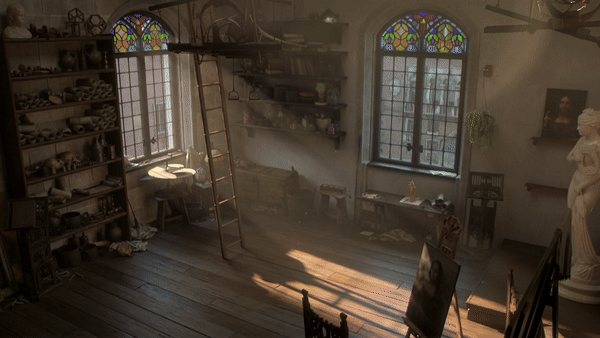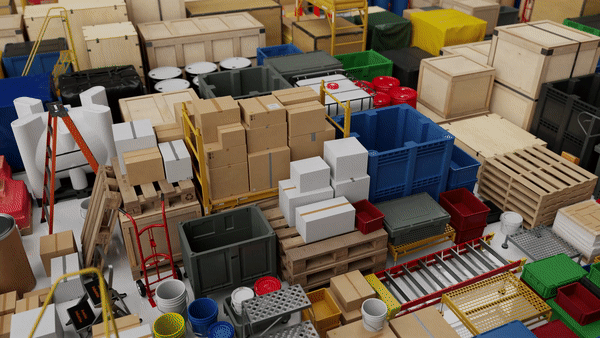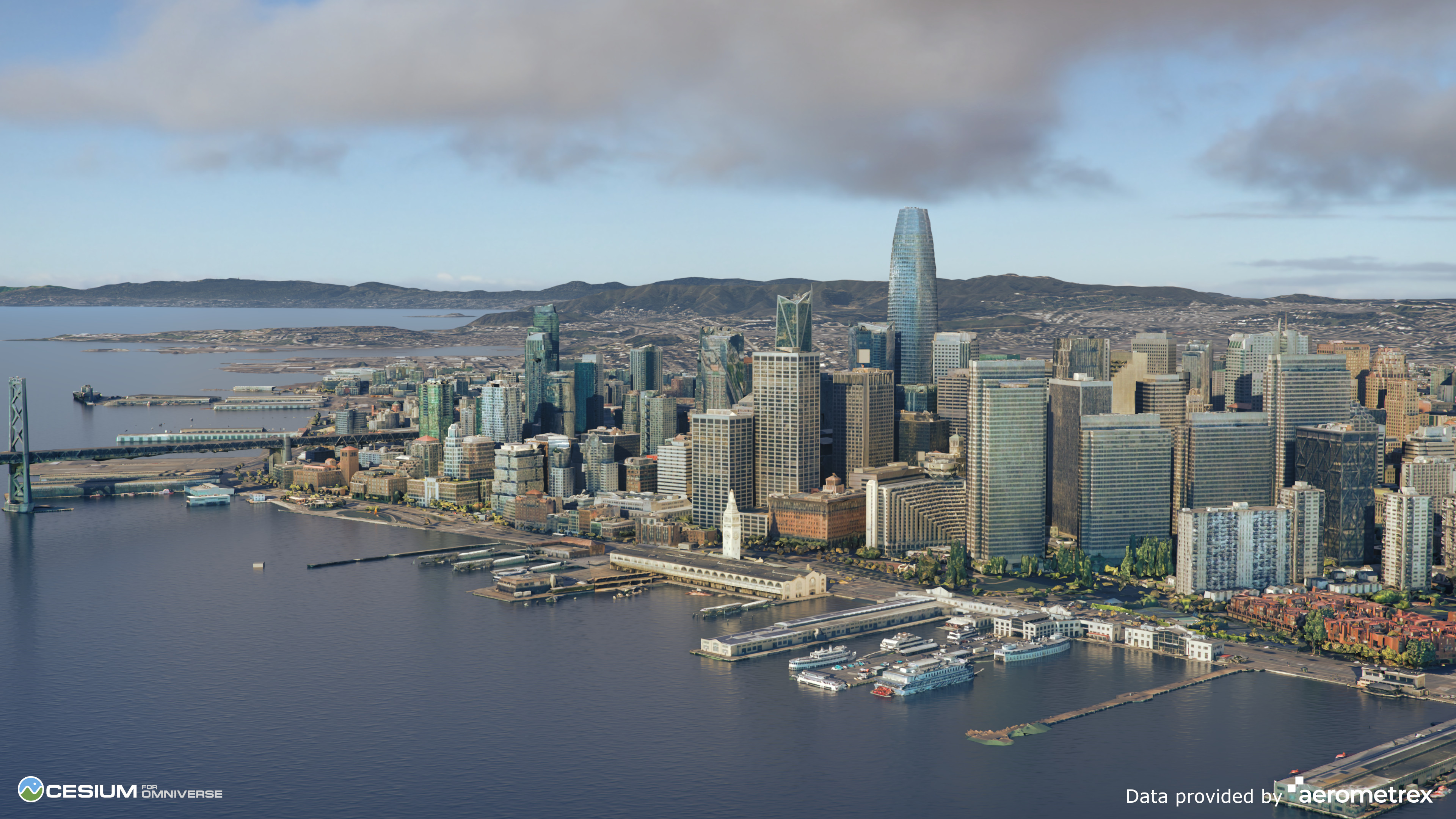
What is Universal Scene Description?
Universal Scene Description is an extensible framework and ecosystem for describing, composing, simulating, and collaborating within 3D worlds. Originally developed by Pixar Animation Studios, USD, aka OpenUSD, is more than a file format—it’s an open-source 3D scene description used for 3D content creation and interchange between tools. Its versatility has made it an industry standard in visual effects, architecture, robotics, manufacturing, and more.
Get Started With OpenUSD
OpenUSD at NVIDIA
OpenUSD (or USD) is the foundation for NVIDIA Omniverse™, a platform of APIs and services that enable developers to easily build tools, applications, and services for 3D workflows based on OpenUSD. Omniverse connects a wide variety of content creation tools to each other and to our real-time NVIDIA RTX™ ray tracing technology.
NVIDIA has expanded on USD by developing new tools, integrating technologies, and providing samples and tutorials. This includes Material Definition Language (MDL), an open-source SDK that produces simple, high-quality shaders as a supported material definition in USD, and USD Physics Schemas for rigid body simulation in partnership with Apple and Pixar. NVIDIA is also working with an ecosystem of partners through the Alliance for OpenUSD (AOUSD)—including Pixar, Adobe, Apple, and Autodesk—to evolve USD as it becomes one of the building blocks in the era of AI and industrial digitalization.
Universal Scene Description for Developers Series: Watch this introductory series by Aaron Luk, a founding developer of Pixar USD and senior engineering manager for NVIDIA Omniverse, to learn about the four USD superpowers developers can leverage to unlock new possibilities in 3D workflows.
Watch the Series
Explore OpenUSD
Try USDView
USDView, developed by Pixar, is a useful tool for loading, visualizing, and introspecting USD files. It's one of the best ways to start exploring OpenUSD, and NVIDIA provides USDView pre-built and configured to get you started right away. Download USDView and check out the USDView documentation to learn more.
Get Started with Omniverse
Download Pre-Built OpenUSD Libraries and Tools
The OpenUSD libraries are only available in source form from Pixar, and building USD can be quite an adventure. To get you started, you can download pre-built libraries, including the accompanying USD Toolset.
Download the usd-core Python Package on PyPI
The usd-core package is also available if you want to experiment with the USD Python API or if you only need the core USD features for reading and writing USD stages and layers. USD comes pre-built and it's just a "pip install" away.
Download from PyPI
USD 23.08, Python 3.10 for Linux
USD 23.05, Python 3.10 for Windows
USD 23.05, Python 3.10 for Linux
USD 23.02, Python 3.10 for Windows
USD 23.02, Python 3.10 for Linux
USD 22.11, Python 3.7 for Windows
USD 22.11, Python 3.7 for Linux
USD 22.08, Python 3.7 for Windows
USD 22.08, Python 3.7 for Linux
USD 22.05b, Python 3.7 for Windows
USD 22.05b, Python 3.7 for Linux
USD 21.05, Python 3.6 for Windows
USD 21.05, Python 3.6 for Linux
USD 21.02, Python 3.6 for Windows
USD 21.02, Python 3.6 for Linux
USD 20.11, Python 3.6 for Windows
USD 20.11, Python 3.6 for Linux
USD 20.11, Python 2.7 for Windows
USD 20.11, Python 2.7 for Linux
USD 20.08, Python 3.6 for Windows
USD 20.08, Python 3.6 for Linux
USD 20.08, Python 2.7 for Windows
USD 20.08, Python 2.7 for Linux
USD 20.05, Python 3.6 for Windows
USD 20.05, Python 3.6 for Linux
USD 20.05, Python 3.7 for OSX
USD 20.05, Python 2.7 for Windows
USD 20.05, Python 2.7 for Linux
USD 20.05, Python 2.7 for OSX
Learn Universal Scene Description
Become an OpenUSD developer by taking these first steps and following the NVIDIA OpenUSD learning content.

Discover two ways of learning about Universal Scene Description. Our guided learning includes an OpenUSD learning path, courses, as well as written and video tutorials that guide you from start to finish as an introduction to OpenUSD. Our independent learning contains foundational knowledge in the form of whitepapers, manuals, and video demonstrations that you can explore at your own pace.
Start Your Guided Learning Start Your Independent Learning
Self-Paced OpenUSD Courses

Getting Started with USD for 3D Collaborative Workflows
Learn how to generate a scene using human-readable Universal Scene Description ASCII (.USDA) files. You’ll be able to create your own scenes within the USD framework, and you’ll also have a strong foundation to use it in Omniverse and applications such as Maya, Unity, and Unreal Engine.
Take the Self-Paced Course

Essentials of USD in Omniverse
Learn about data modeling using Prims, attributes, relationships, and custom schemas and composition for scene assembly and collaboration. The course includes a hands-on portion that utilizes the USD Python API to experiment with the fundamental concepts of USD.
Take the Self-Paced Course
View the Latest OpenUSD Tutorials
Download USD Sample Assets
Free and open-source USD samples are available for download through NVIDIA Omniverse and partner sites.

Da Vinci Workshop Assets
Download the OpenUSD Da Vinci workshop scene and dataset.
Consult the Documentation

SimReady Warehouse Assets
Download Omniverse to get the latest SimReady (or Simulation-ready) USD assets.
Download Omniverse

Cesium AECO Demo Pack
Download Cesium 3D geospatial data for architectural, engineering, construction, and operations workflows.
Download Omniverse

AECO Demo Packs
Download Omniverse to access these five unique AECO worlds. They include source data from Autodesk Revit, Autodesk 3ds Max, McNeel Rhino and Grasshopper, Trimble SketchUp, and ArcGIS CityEngine.
Download Omniverse

Attic USD Sample
This work is licensed under a Creative Commons Attribution 4.0 International License
Download Omniverse

Pixar’s Kitchen Set
Review and accept Pixar’s license agreement before downloading the file.
Download From Pixar

Animal Logic - USD ALab
The USD ALab dataset is the Animal Logic interpretation and implementation of real-world production and pipeline concepts. There are three downloads available, including textures and baked procedurals.

Intel® - 4004 Moore Lane
Download this open-source USD asset from the Academy Software Foundation (ASWF).
Download from ASWF
Find Additional Resources
USD and Hydra Resources
 Documentation and References
Documentation and References
 Documentation and References
Documentation and References Documentation: Pixar's USD Documentation
Documentation: Pixar's USD Documentation Documentation: Glossary of USD Terminology
Documentation: Glossary of USD Terminology Documentation: NVIDIA USD Documentation
Documentation: NVIDIA USD Documentation Documentation: NVIDIA USD Python and C++ Codes Samples
Documentation: NVIDIA USD Python and C++ Codes Samples
 GitHub: NVIDIA USD Plugin Samples
GitHub: NVIDIA USD Plugin Samples GitHub: Pixar OpenUSD Source Code and documentation on GitHub
GitHub: Pixar OpenUSD Source Code and documentation on GitHub Documentation: USD Cookbook by Colin Kennedy
Documentation: USD Cookbook by Colin Kennedy Documentation: Remedy Entertainment's Book of USD
Documentation: Remedy Entertainment's Book of USD
 Videos and Learning
Videos and Learning
 Videos and Learning
Videos and Learning Tutorial: USD Primer by Rob Stauffer, SideFX
Tutorial: USD Primer by Rob Stauffer, SideFX Tutorial: Overview of USD and Hydra by Pixar
Tutorial: Overview of USD and Hydra by Pixar Tutorial: USD On-Demand Video Training Content
Tutorial: USD On-Demand Video Training Content  Tutorial: Understand USD Fundamentals by Apple
Tutorial: Understand USD Fundamentals by Apple  Tutorial: USD at Remedy
Tutorial: USD at RemedyAlliance for OpenUSD
Pixar, Adobe, Apple, Autodesk, and NVIDIA have formed AOUSD, an open, non-profit organization dedicated to fostering the standardization, development, evolution, and growth of OpenUSD.
Visit the Forum Read the Latest Blogs